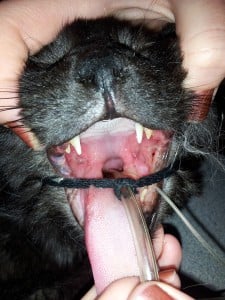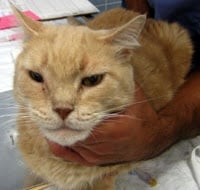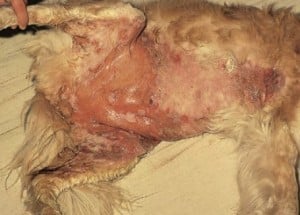Veterinary technicians commonly perform or assist with ophthalmic examinations. This blog is a review on common eye tests and normal values.
A good eye exam begins with a thorough history and appreciating a patient’s signalment (age, male/female/spay/neuter status, breed). Some particular breeds may be predisposed to certain ocular diseases. Taking a good history may help the veterinarian make a proper diagnosis and treatment plan.
Eye tests should be performed in a certain order. The proper order for the most common ocular tests are Schirmer Tear Test (STT), Fluorescein stain, and Intraocular pressures (IOP).
1) Schirmer Tear Test- The STT tests for dry eye or kerratoconjunctivitis sicca (KCS). This is a decrease in tear production. A small piece of paper made for this test is inserted under the lower eyelid and held in place for 60 seconds. Normal tear production should be greater than 15 mm in 60 seconds. Most normal dogs will produce more tears than this but this is a guideline to follow.
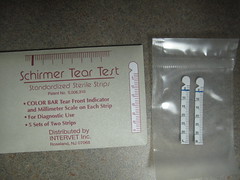
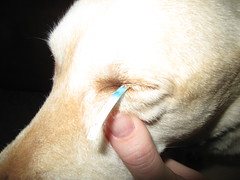
2) Fluorescein stain- This is a yellow dye which is applied to each eye to look for a corneal abrasion or ulcer. The abrasion or ulcer is seen when highlighting the stained eye with a fluorescent blue light.




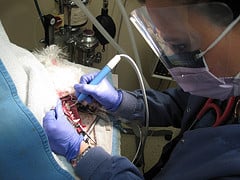 One of the most common reasons owners neglect dental care or other procedures for their pet is fear of anesthesia. In fact, many owners have either had a negative experience surrounding anesthesia with a previous pet or with themselves, or have a friend who had a bad experience. Veterinary medicine has come a long way in terms of standards of care and many people do not realize how advanced our anesthesia protocols and procedures have become.
One of the most common reasons owners neglect dental care or other procedures for their pet is fear of anesthesia. In fact, many owners have either had a negative experience surrounding anesthesia with a previous pet or with themselves, or have a friend who had a bad experience. Veterinary medicine has come a long way in terms of standards of care and many people do not realize how advanced our anesthesia protocols and procedures have become.
